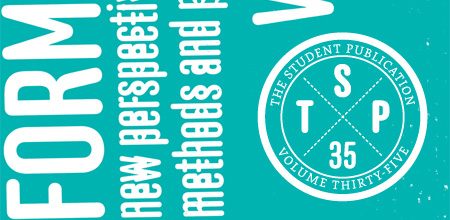Technological developments make connectivity to people, information and services possible at almost any time. Despite the increased opportunity for innovation and creativity, learning and adapting to these new situations can be disorienting as people struggle to stay up to date and familiar in the changing spaces of classrooms, hospitals, public spaces, and offices. Demands are placed on us all to use or participate in these systems proficiently. Accordingly, designers must generate new methods and ways of thinking that inform practice and address the complexity of these new conditions. How have emergent innovations—those that rise from the bottom rather than distributed top-down—affected design methods? In what ways have today’s methods adapted (or not) to current trends? When is a project that can continually be updated ‘finished’? How does a project scale across different media at different times? What boundaries of design are collapsing or combining? How has the role of the designer in collaborative processes affected how we think and operate? What and for whom are we designing? How are we involving them? As design students (in the process of situating our own understanding and methodologies within a larger context) critical perspectives of these issues are particularly relevant and necessary to understand the current and future states of design practice.
Volume 35 seeks to examine how design thinking and methodologies have transformed and evolved—and might continue to do so—based on advances in technology, connectivity, emergent innovation, and global cultures. Current contributors to the publication explore this theme through various lenses, from learning environments to the form of code. We are excited to have acceptance for renowned designers living, teaching and practicing all over the word. Our current contributors include Juhani Pallasmaa, Casey Reas, Eve Edelstein, Nicole Dotin, Fernando Magallanes, Deb Littlejohn, Erin White and Matt Tomasulo. In some way, each of these contributors has influenced that way that we think, learn and practice design in the College. Whether through lectures, participation in events and exhibitions, or learning and practicing within these walls, the diversity of voices and processes evident in this group gives a unique and provocative series of perspectives and interpretations on the current and future of design process and practice.

